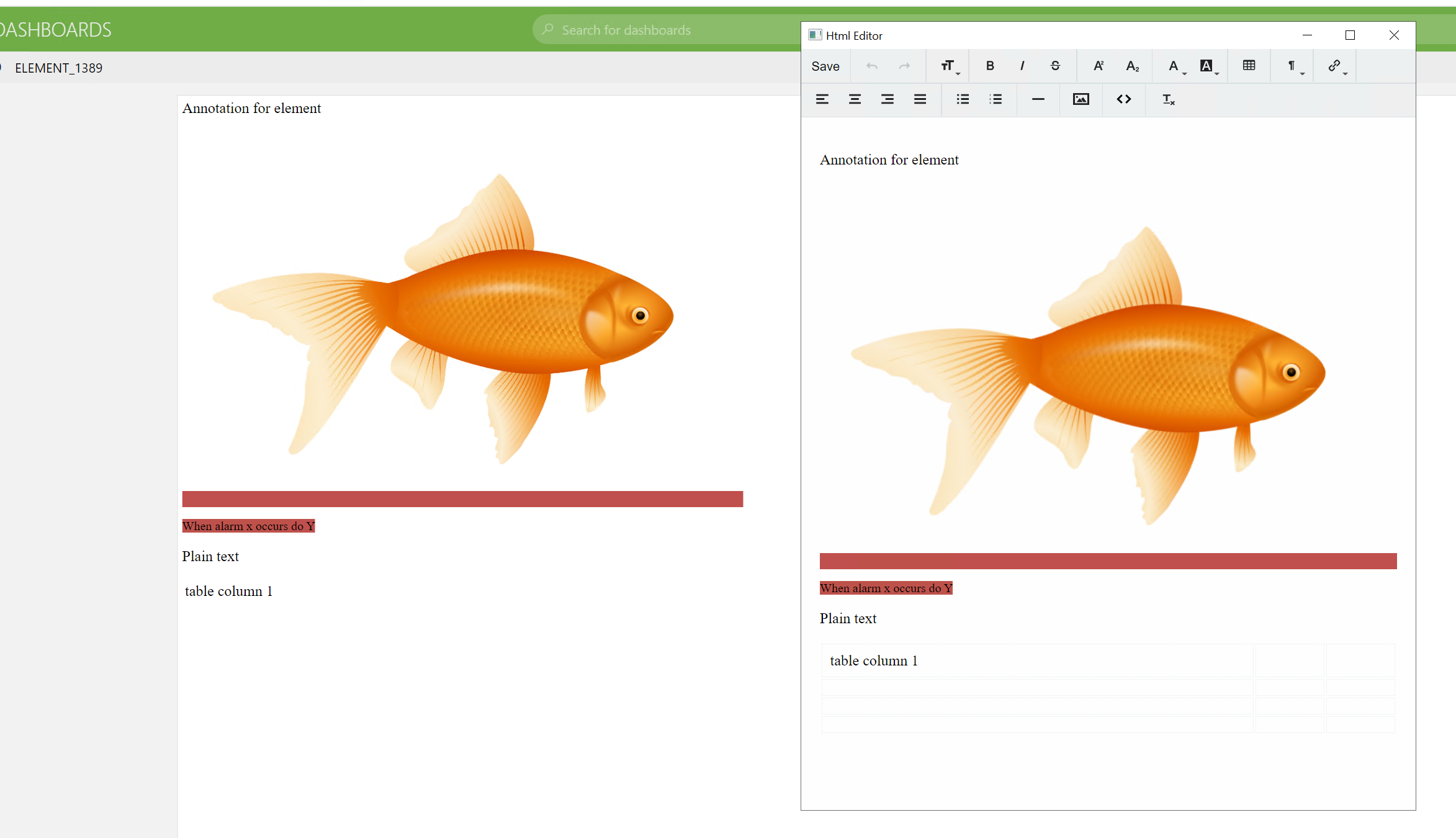I note with some alarm that the Annotations module is being disabled from 10.4.0 onwards. Within our DataMiner systems, we have made quite extensive use of this. It allowed us to use "generic" visual files as templates for services, but to have service/site specific information readily available to the operators when viewing the service in Cube.
So, the question is if this is being removed, what is the practical alternative to replace it? The initial potential options available in DataMiner that come to mind seem to be: Notes, Documents or Properties. However, none of these really match our current use of Annotations.
Notes: While conceptually the “closest” match to Annotations in how they are associated with a service, the intended role of Notes is different. They are more the yellow “post-it” functionality for temporary issues around a service to be shared with everyone, rather than permanent specific information. Yes I know they can be set not to expire, but it is still too easy to delete them with a single click and they only allow you to add plain text to them, rather than the richer HTML structured information (e.g. lists, bold text, embedded pictures) that is available with Annotations.
Documents: While these allow you to theoretically add any type of document to the system, they are not service specific. They are either general documents that are available whichever service you are looking at, or they are associated with an element that is included in the service, either related to the protocol/connector for that element type and therefore not specific to the service or related to a specific element instance. There is no way of associating a document which could contain information about multiple elements in the service with a specific service. In addition, any document needs to be viewed in a separate application. The contents are not shown directly within Cube as Annotations are.
Properties: One could theoretically create a custom “Annotations” property and potentially display the contents of it on a separate page in the visual file. However again you are limited to simple textual information, and I suspect that there is a limit of the size of the contents of a property.
I wonder what the reason for removing the Annotations functionality is. Is there a technical reason, or was it felt to not be widely used? Personally, we found it very useful and its removal is arguably a loss of key functionality and a retrograde step in the usability of the DataMiner system for our operators.
Does anyone else feel the same? Or are there other alternatives that people are using to provide the equivalent functionality?
Hi Paul,
I would look into the direction of dashboards here.
Since annotations are in the background html pages (C:\Skyline DataMiner\Webpages\Annotations), you could use a webcomponent where you copy the actual html content or provide the url.
Keep in mind that there's isn't an actual html editor anymore, so if you want to change it , you are looking to a tool like Visual Studio Code to do changes directly in the html.
However it might also be worth to have a look at the other dashboard components including text/image/.. this way adding images/texts can be done directly from the dashboard edit.
In the background a dashboard is a json stored under C:\Skyline DataMiner\Dashboards\. Most likely via scripting you could create dashboards with the content of the html annotations page.
If you want to edit, you can then look at either modifying the html directly or decide to switch to e.g the image dashboard component and text component and copy paste the text/image in there and remove the html.
Since the url of the dasboard is of course different, this means that items that link to that url won't be correct anymore. So those urls will need to be updated as well. Potentially it's possible to have a redirect in the IIS Webserver, but this could be a step to far, depending on the amount of work involved to change the urls.


Hi Tim,
Thanks for suggestion of using dashboards. While it provides a lot of flexibility in terms of what you can display, it does have a similar issue to using Documents in that it takes you to another “application” rather just being a card within the Cube display. As a result there is no longer a direct linkage/connection between the service being viewed in Cube and the actual dashboard being shown.
Actually most of our Annotation pages associated with a service are quite simple HTML (e.g. lists or a couple of paragraphs with maybe some bold text), so it isn’t really the HTML functionality I am concerned about, more the close coupling with actual service being shown in Cube. In this respect the Annotations are more like an additional Data display page.